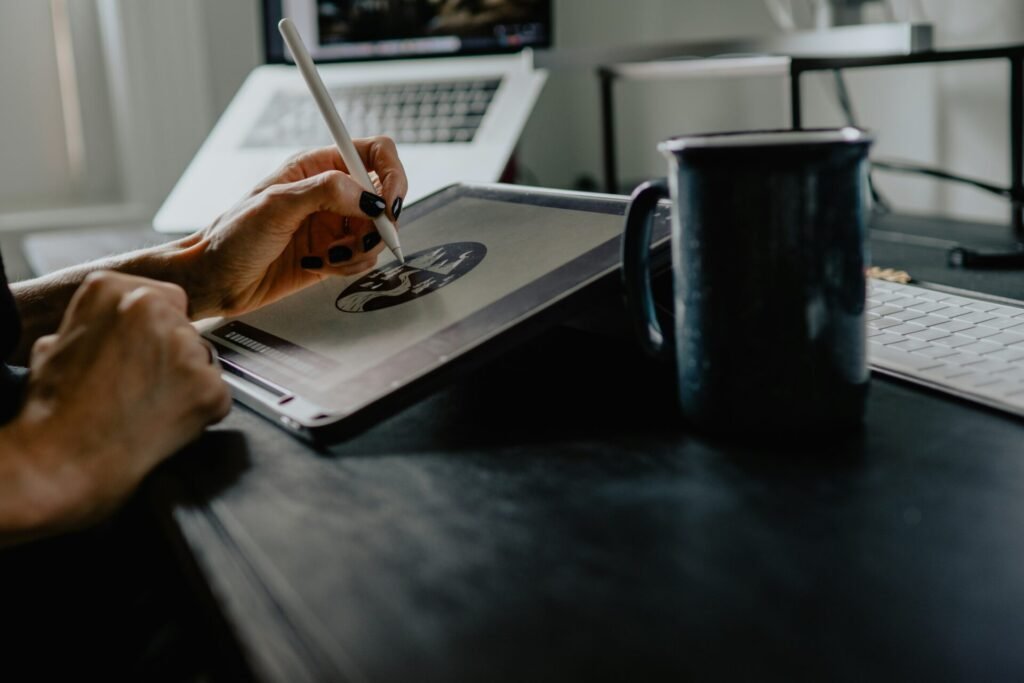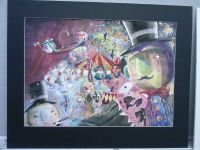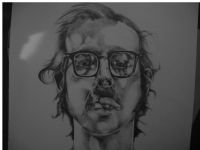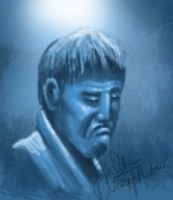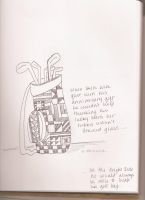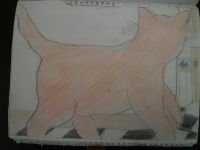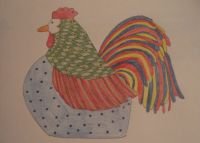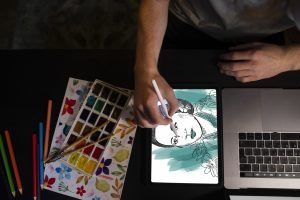What Are Digital Art Materials?
Stepping into digital art can feel like walking into a warehouse filled with brushes, canvases, and gadgets you’ve never heard of. Where do you even start? Whether you’re picking up a stylus for the first time or switching from traditional to digital mediums, knowing what tools to use (and why) can accelerate both your growth and confidence.
This guide demystifies digital art materials, helping beginners navigate essential tools while fostering creativity, productivity, and joyful experimentation.
Digital art materials are the virtual counterparts of physical art tools—think brushes, canvas, paper, and ink, but inside your device. These resources are used within art software to simulate real-world effects or expand artistic possibilities far beyond analog limits.
Key categories include:
- Brush packs (texture, ink, paint, shading)
- Color palettes (pre-set or custom swatches)
- Texture overlays (paper grain, watercolor wash, halftones)
- Stamps and assets (leaves, clouds, facial features, etc.)
- Layer styles and effects (glow, gradient, shadow)
Just like traditional tools, your choices depend on your style, goals, and the software you’re using.
Choosing the Right Hardware
Before diving into brushes and palettes, consider your hardware setup. Your experience with digital art materials will feel very different on an iPad vs. a desktop tablet.
- Tablet with stylus: iPad with Apple Pencil, Wacom Cintiq, or Huion Kamvas
- Stylus responsiveness: Look for pressure sensitivity and tilt recognition
- Display quality: High resolution and color accuracy are vital for color-focused work
Investing in quality hardware creates a natural drawing experience, allowing you to get the most from your digital materials.
Popular Art Software of 2025 for Beginners
Each platform offers its own ecosystem of brushes, materials, and effects:
- Procreate – iOS-based, intuitive interface with robust brush library
- Clip Studio Paint – Ideal for comics, illustration, and detailed inking
- Adobe Photoshop – Industry standard with massive third-party brush support
- Krita – Open-source and feature-rich, perfect for experimenting
- Corel Painter – Known for realistic painting simulation
Most of these apps allow you to import brushes, textures, and swatches to customize your toolset. The key is finding one that matches your artistic needs and learning style.
Essential Digital Art Materials Every Beginner Should Try
When building your first digital art toolkit, focus on foundational tools before diving into advanced effects.
- Basic Brush Sets – Pencil, ink, flat paint, airbrush
- Blending Brushes – Smudge, dry media mixer, water
- Line Art Brushes – For clean, consistent strokes
- Paper Textures – Subtle overlays that add tactile quality to digital work
- Gradient Maps – Great for color grading and emotional depth
- Color Palettes – Pre-built sets for mood, lighting, or natural harmony
Explore these elements individually and begin noting which combinations enhance your workflow.
How to Organize and Manage Your Materials
As your collection grows, keep your workspace usable by organizing:
- Brush folders by type or style (inking, texture, effects)
- Custom color palettes labeled by theme or project
- Reference boards for visual consistency across projects
- Cloud backup so you never lose materials when changing devices
A clean workspace minimizes friction between inspiration and execution.
Free vs. Paid Digital Materials
Plenty of incredible resources are available for free—but don’t shy away from paid materials if they match your needs. The difference often lies in the quality of brush dynamics, the realism of textures, and the level of creator support.
Free resources can be found through artist communities, forums, or within your software’s marketplace. Paid packs often come with tutorial bundles or lifetime updates, which can dramatically cut your learning curve.
Exploring Style Through Digital Material Play
Your choice of materials directly influences your artistic voice. Are you drawn to gritty, expressive brushstrokes? Try grain-heavy charcoal brushes and scanned paper textures. Prefer clean vector art? Use hard-edged ink pens and sharp fill tools.
Don’t treat digital materials as static—tweak opacity, combine textures, experiment with blend modes. The goal is not just to emulate traditional tools but to discover what digital can do that paper can’t.
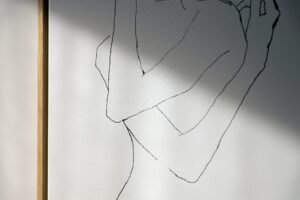
Sketchbooks.org | NEW TECHNIQUES
How to Use Timed Minimalism Sessions | Create Bold, Expressive Sketches
What Are Timed Minimalism Sessions? Exploring how to use timed minimalism sessions to create bold, expressive sketches is a game-changer for artists seeking clarity, energy, and spontaneity in their work. This technique combines two potent...
Frequently Asked Questions
What are digital art materials?
They’re downloadable or built-in tools like brushes, textures, and swatches used in digital drawing software.
Do I need a drawing tablet to use digital materials?
While not mandatory, a tablet with a stylus provides better control and a more natural drawing experience.
Which software is best for beginners using digital materials?
Procreate and Clip Studio Paint are user-friendly and ideal for learning the basics of digital tools.
Are all brushes compatible across programs?
No—each program uses its own brush file format, though some offer import/conversion options.
Can I make my own digital materials?
Yes, most platforms allow you to create and save custom brushes, patterns, and textures.
Should I start with free or paid materials?
Start with free packs to explore your preferences; upgrade when you find a style you want to master.
How do I organize my brushes and textures?
Use folders or tags inside your software and back up your files to the cloud for safety.
What’s the difference between a texture and a brush?
A brush is a tool that applies strokes; a texture overlays a visual surface pattern to enhance the piece.
Can digital art ever truly feel like traditional art?
With the right materials and settings, many artists replicate traditional effects surprisingly well.
Final Thoughts
Digital Art Materials may sound intimidating at first, but with a little structure and curiosity, they become your gateway to unlimited creative potential. Whether you’re experimenting with brushes, crafting custom palettes, or layering textures, your sketchbook expands well beyond the page. Every digital mark you make becomes both practice and performance—a reflection of your evolving artistic voice.
Start small, stay consistent, and give yourself permission to play. The toolkit will grow with you, and so will your confidence. In digital art, the real magic isn’t the tools—it’s what you do with them.
Ready to Share Your Work?
